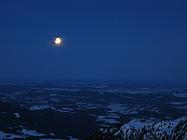
This Gallery of Lunar Eclipse images will be also actualized and extended!
Quick link index to the experienced lunar eclipses of this gallery: total, December 2010 , partial, August 2008 , total, February 2008 , total, March 2007 , total, May 2004 , total, November 2003, total, May 2003 and finally the total eclipse of January 2001.
All eclipse pictures can also be watched by this way .
Many of the lunar eclipses showed here have been observed at the Mt. Wendelstein with the historic 2 3/8" Schiefspiegler. There is an own category about this instrument at the technic page. There you'll find also more informations about handcrafted accessories and telescope modifications.

Total lunar eclipse December 21st 2010:
This total lunar eclipse occured at dawn of December 21st, therefore only the beginning of the eclipse could be observed. Already a few minutes after second contact the sky over Bavaria has brighten up and the Moon stood pretty close to the horizon. This eclipse has been photographed with minimal equipment at Mt. Wendelstein. Not a telescope has been used, only compact cameras on a tripod at the window instead:

Partial lunar eclipse August 16th 2008:
During this deep partial lunar eclipse the weather played its part to a largely satisfaction. Only a few cirrus clouds disturbed the spectacle. Short after eclipse started continuosly images with different exposure times have been done. Later these were used to make HDR images, which are also used for a nice animation .

Total lunar eclipse February 21st 2008:
It was almost a miracle to see at least something of this eclipse, probably due to the exposed location of the Mt. Wendelstein. Though the view to totality was refused, only a touch of deep penumbra eclipse could be seen:
 |
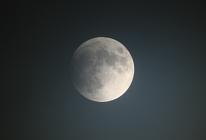 |
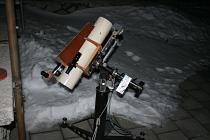 |
At the first image one can see beside the proven constellation 2 3/8" Schiefspiegler at M1 mount also the new 16" Cassegrain of the Mt. Wendelstein Observatory. The full Moon has also already entered the stage.

Total lunar eclipse at March 3rd 2007:
Finally after a long time again a lunar eclipse could be viewed at the Bismarck Observatory. But clouds blurred the show, only five minutes of totality were clearly observable. The new Canon 350D came to use. The 1st row shows the focal view through the 400mm telelens which has provided so many good services:
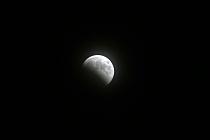 |
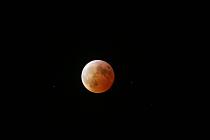 |
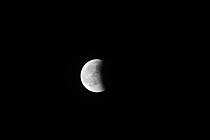 |
Instead many clouds enough exposures from the whole event sufficient for a respectable Gif animation could be done with the tele and Bismarck. It has a filesize of about 750 kb and shows almost the whole course.
Now the next two rows are showing EOS 350D "Photonensack" focal images through the 13" Bismarck:
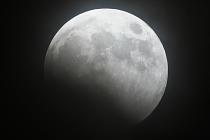 |
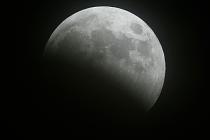 |
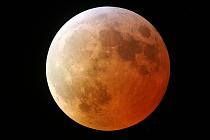 |
Against end of totality pleasantly a great cloudhole arrived, making the nice images possible. The last row of images shows Bismarck in its actual configuration equipped with the tele pointing towards Moon. The first shot a three image composite with exposuretimes from 1/500 til 0.3 secs is interesting. The dynamic range of the glistening moon and the eclipsed part has been packed with Gimp into this one image. The last shot was created short before end of the partial phase:
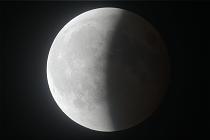 |
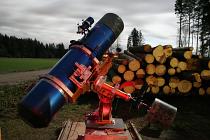 |
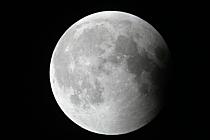 |

Total Lunar Eclipse at May 4th 2004:
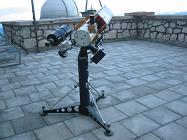 |
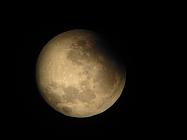 |
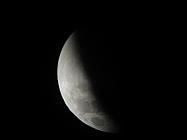 |
The first row shows the equipment used again at the Mt. Wendestein. The alignment with 2 3/8 inch, Maksutov and 400mm Telelens respectively at the M1 mount is well tested. Both images of the partial phase are done with a Canon Ixus digicam through the 1000mm Maksutov.
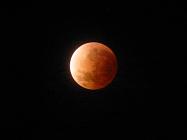 |
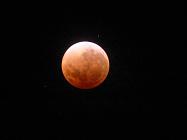 |
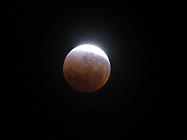 |
The second row consists of exposures, taken with the Ixus through the 400mm Telelens. No shading of the image caused by the eyepiece projection method is observable. The next images shows stages of the moons egress out of the earth's shadow.
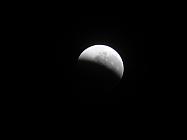 |
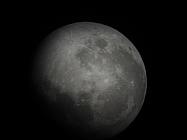 |
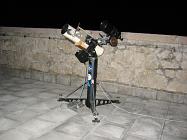 |
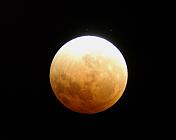 |
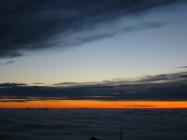 |
The middle exposure done with the Casio digicam through the 1000mm Maksutor shows the moon at mid eclipse. Now an adapter for correct fitting of this camera at the scope is available. Check also the eclipse report of November 9th 2003. The eclipse was well observable in its full length despite of a bad weather forecast. The weather remained good until next morning, the right image shows the view towards east into the dawn, the silhouette of Bavarian Forest is visible above the cloud layer. Finally a little panorama of this impressive morning view:

Total Eclipse of the Moon at November 9th 2003:
This row of images shows the step by step entry of the Moon into the Earth's shadow. Pictures taken with the Casio digicam of the Mt. Wendelstein Observatory with eyepiece projection through a 1000 mm Maksutov. Because of a missing adapter for the Maksutov the projection device was held by hand behind the scope.
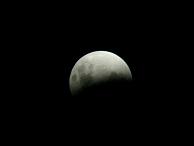 |
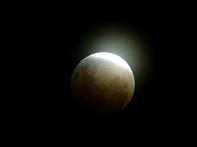 |
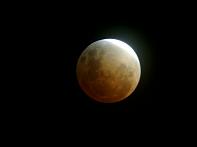 |
The first image of this row shows the total eclipsed Moon. The second exposure is taken from three added images, every with 60 seconds exposure time and dark correction. The other images shows phases of the egress from the Earth's shadow.
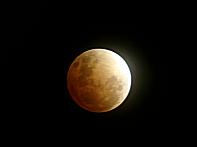 |
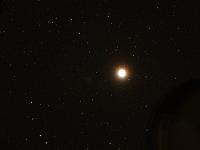 |
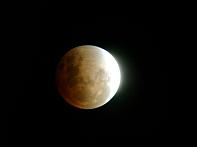 |
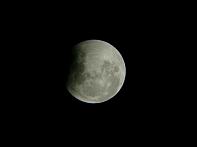 |
This row shows beneath the almost full Moon short after finishing of the partial phase above all the observing instrumentation at the terrace of the Wendelstein Observatory. Beside the Maksutov the oldest of my telescopes the 2 3/8 inch Schiefspiegler came here into operation. After making a one arm fork for Schdoffal the M1 mount is again available for such purposes. The Schiefspiegler is from the pre Bismarck era and it is more than 25 years old!
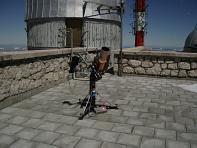 |
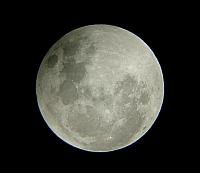 |
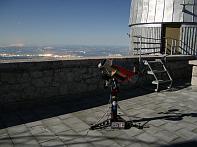 |

Lunar Eclipse at May 16th 2003:

Total Eclipse of the Moon at January 9th 2001:
This event is not really actual but I found this focal shot, done with Bismarck, and it is indeed acceptable.

 To planet page
To planet page |
 To Astrophoto gallery
To Astrophoto gallery |
|---|
 To Bismarck start page
To Bismarck start page |
 To Bismarck gallery.
To Bismarck gallery. |
 To Christina and ULT page
To Christina and ULT page |
 To main page
To main page |
|---|
